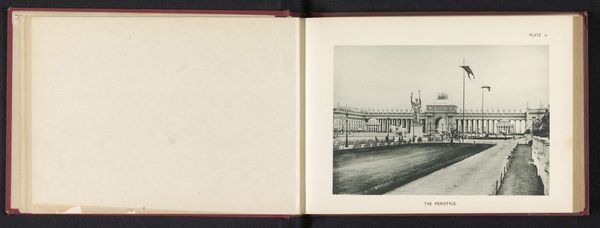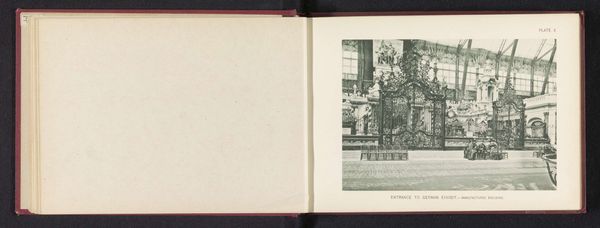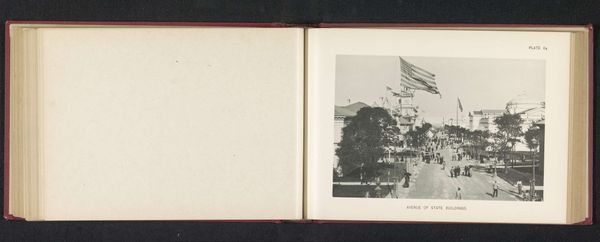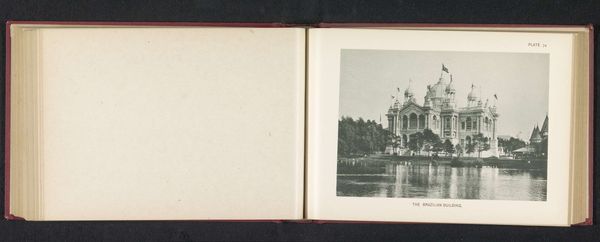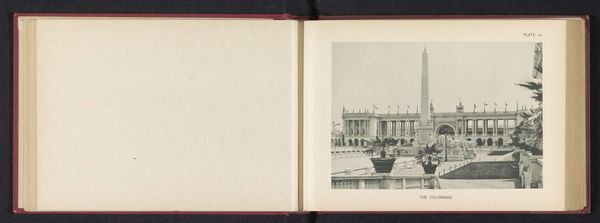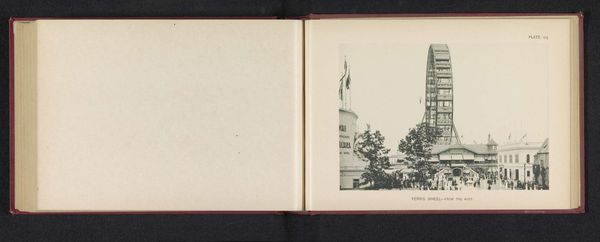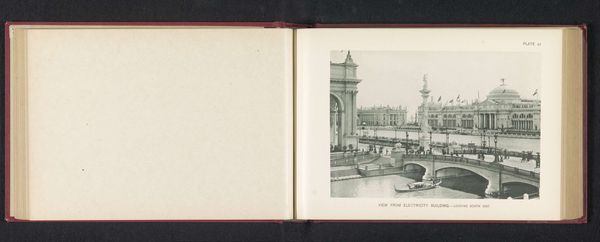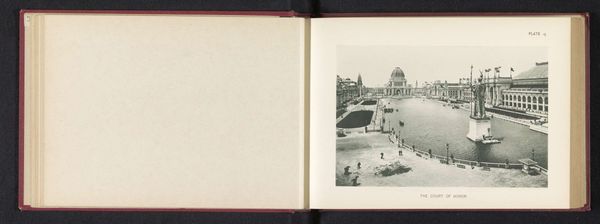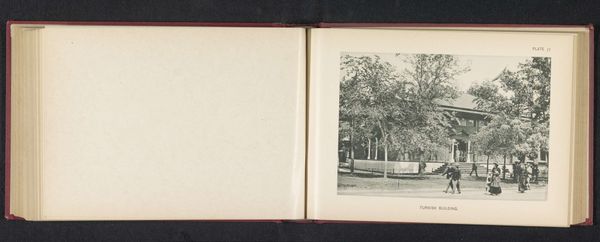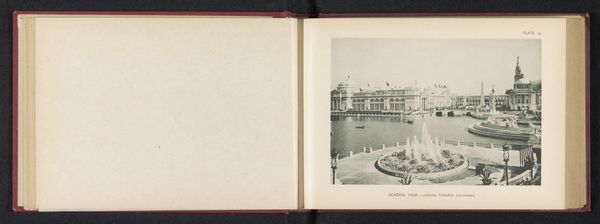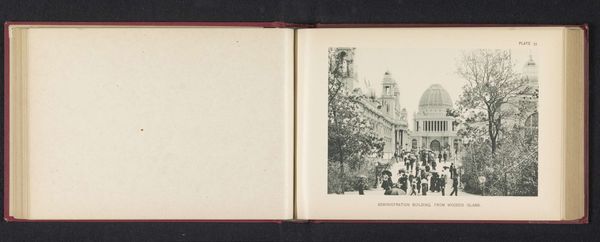
Gezicht op het gebouw voor de vrije kunsten tijdens de World's Columbian Exposition in Chicago in 1893 1893
0:00
0:00
Dimensions: height 134 mm, width 192 mm
Copyright: Rijks Museum: Open Domain
Editor: Here we have Charles Dudley Arnold’s "Gezicht op het gebouw voor de vrije kunsten tijdens the World's Columbian Exposition in Chicago in 1893," an albumen print dating to 1893. The architecture is just stunning. What strikes me most is its pristine quality, even as a photograph of a historical moment. How do you interpret this work? Curator: I see it as a constructed narrative, a deliberate portrayal of progress and American exceptionalism on stolen land. The Columbian Exposition itself was a spectacle of colonialism, masking imperial ambitions behind a facade of art and culture. Editor: So you’re saying that this photo, despite its beauty, participated in a problematic narrative? Curator: Absolutely. The “White City,” as it was known, was built to impress and to project an image of dominance. This photograph romanticizes that vision, glossing over the displacement and erasure of indigenous populations. The water, the classical architecture… it evokes a sense of idealized grandeur. Editor: I hadn’t considered the role of erasure here, but it makes so much sense. How do we reconcile appreciating the aesthetics with acknowledging the historical context? Curator: By interrogating the power structures at play. Who is represented? Who is missing? What ideology does this image serve? It becomes a tool for critical examination, understanding the art’s role in shaping cultural narratives. Editor: That's helpful. So by understanding the context, we can have a more informed view of both the aesthetic achievements and social implications. Curator: Precisely. It’s about peeling back the layers of visual pleasure to reveal the complex and often contradictory forces that produced it. We can look to theorists like Edward Said to challenge our own perception of photographs such as this one. Editor: This has given me a whole new perspective on photography and representation. I see now that beauty can also obscure, and that context is vital for understanding art's impact. Curator: It’s in these conversations that we truly engage with art, not just as an object of beauty but as a site of cultural struggle and historical reckoning.
Comments
No comments
Be the first to comment and join the conversation on the ultimate creative platform.
